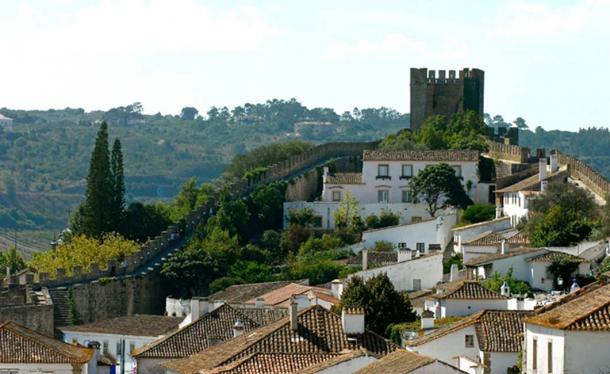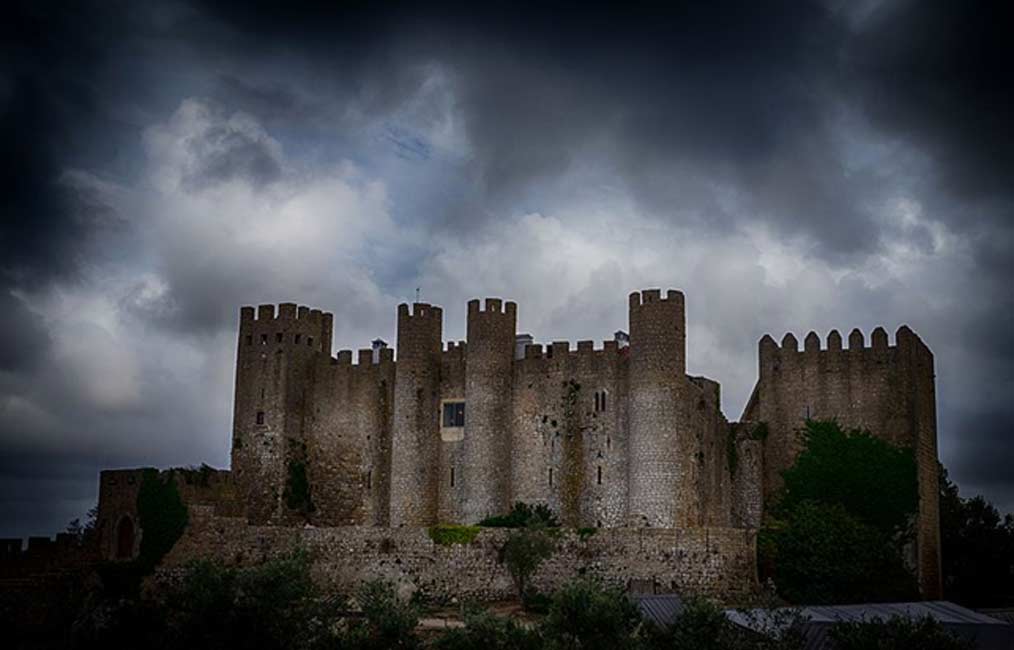Discover the Rich History of the Magnificent Portuguese Castle of Obidos
The history of medieval Portugal is well documented by a number of artifacts, but also in its incredibly beautiful buildings. One of such structures is Castelo de Óbidos – a castle with roots deep in antiquity.
The castle is one of the official wonders of Portugal, and it’s a source of national pride. The rich story of the area of the settlement sounds like a movie scenario. The castle was a witness to fights for the throne, political changes, and even Roman activities. It continues to be one of the central sites related to the colorful history of Portugal. It was a home to broken hearted queens and a safe harbor for some kings.
Becoming a Legendary Location
Now the Óbidos castle is a famous site, but two centuries ago it was just another Roman settlement. This location was mentioned by Pliny the Elder, and it is known that it was an important place for Romans until it became a Visigoth territory in the 5th century. Later, the area belonged to Muslims, who fortified the town during the 8th century. This was the beginning of the castle’s construction.

View from the west of the Óbidos castle and walls. (Alvesgaspar/ CC BY SA 3.0)
In the 12th century, during the Christian Reconquista, the site of the castle in Óbidos was conquered by the first Portuguese king, Alfonso I. Since January 10, 1148, the site became strongly connected with building the power of the Kingdom of Portugal. However, the fortification itself did not belong to the Portuguese crown until a little bit later, during the reign of King Sancho I. According to the document called Torre do Facho this event took place in 1195.
Alfonso II decided to expand the castle and gave it to his wife as a gift in 1210. During those times, the castle was already a significant fortress. The tower of the castle was adapted as it was necessary to have a jail inside, but other parts of the construction began to flourish. The castle was expanded on during the next century, so much so that when it became a wedding gift to Denis (1279 - 1325) and Queen Elizabeth during their stay, it was already one of the most impressive castles in Europe.
- Legends say mysterious women built the megaliths of Portugal
- A Peek into The Paranormal Activity at Haunted Castles in Romania
- Capela do Senhor da Pedra: The Pagan Origins of the Chapel of the Lord of Stone

Denis of Portugal and Elizabeth of Aragon. (Public Domain)
During the Portuguese succession crises, it was also an important place for fighting. The castle and the town became the property of John I of Castile. During the 15th century, the building received new neighbors – a growing settlement. It was still a very important center for political events, but also a perfect castle to hide away from the world, as Queen Leonor did after the death of her son. Óbidos castle provided privacy, safety, and also a sense of freedom for the royals. Therefore, they liked to invest their money into it.
In 1755, Lisbon and the surrounding area suffered from an earthquake. The castle of Óbidos was damaged too. The fortress was fixed, however, a few decades later, in 1808, the castle suffered once more, this time due to artillery rounds during the battle of Rolica. It was the first, and last time, when the castle was damaged by a difficult battle. But it was with this battle that the castle became a symbol of victory over Napoleon Bonaparte’s army.
The middle of the 19th century was a period when castles in Portugal began to look more like romantic spaces than fortresses. In 1842, the tower which was a prison became the clock tower. In 1869, the construction of the castle was slightly altered, but without any damage to the previous style.

Exterior of the Óbidos pousada in Portugal. Source: Elisete Reis/CC BY SA 3.0
Modern reconstruction and restoration of the castle and buildings around it started in 1932. It was abandoned for several years, but since 1948 the castle received a new life. A project by João Filipe Vaz Martins changed the medieval castle into a pousada (luxury accommodation). In 1951, the castle was classified as a National Monument of Portugal and received a special donation. These funds helped transform it into a tourist attraction. Many historical artifacts, including the furniture and other precious items like paintings, were brought to the castle.
- Radzyn Chelminski: The Captivating History of a Castle of the Teutonic Order
- A Monument of Faith: The Magnificent Pena Palace in Sintra
- Seven Hills: The Symbol of the Magic of Lisbon
The castle still has its original trapezoid shape and it's located 79 meters (259 ft.) above sea level. Currently, it connects the elements of Gothic, Baroque, Romanesque and Manueline architectural styles. After many years of work, the Óbidos castle has the glory it deserves once again.
Eternal Beauty and Medieval Pride
Now, the castle is open to the public and is one of the greatest attractions in Portugal. The Óbidos castle’s landscape allows tourists to feel like they have traveled in time. The impressive view from the towers and walls of the castle provide visitors with unforgettable memories, and a feeling that the magnificence of the Kingdom of Portugal didn't end with the fall of the last king.

The Óbidos Castle and town in Portugal. (Pedro Ribeiro Simões/CC BY 2.0)
Top Image: The Óbidos castle. (Travelholic Path/ CC BY 2.0)
References:
Pedro Castro Henriques, Rui Cunha, Óbidos: um convite ao olhar, 1995.
Manuela Santos Silva, Estruturas urbanas e administração concelhia - Óbidos Medieval, 1997.
José Fernandes Pereira, Óbidos, 1988.
Castelo de Óbidos, available at:
http://www.monumentos.pt/Site/APP_PagesUser/SIPA.aspx?id=3324


















